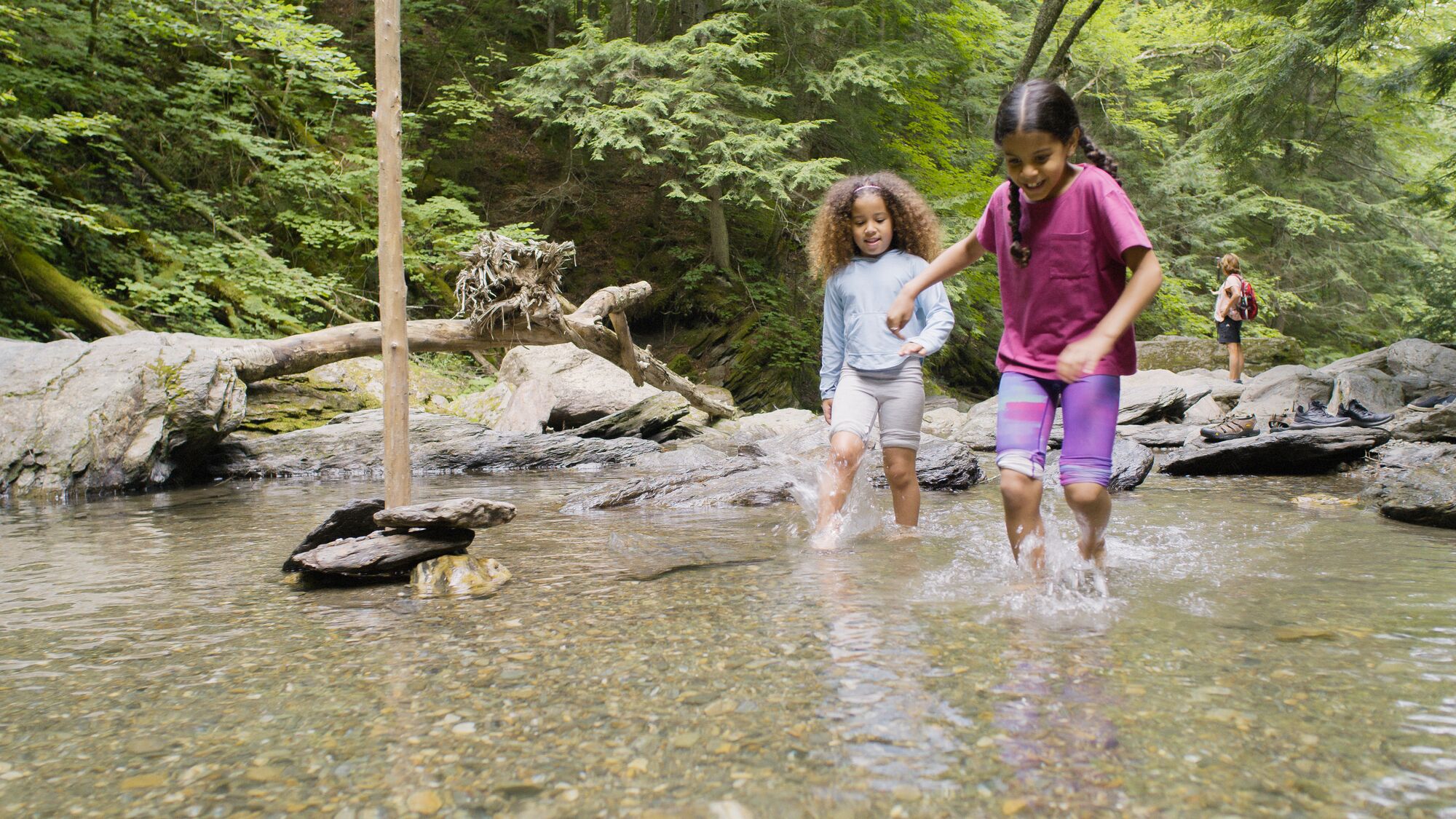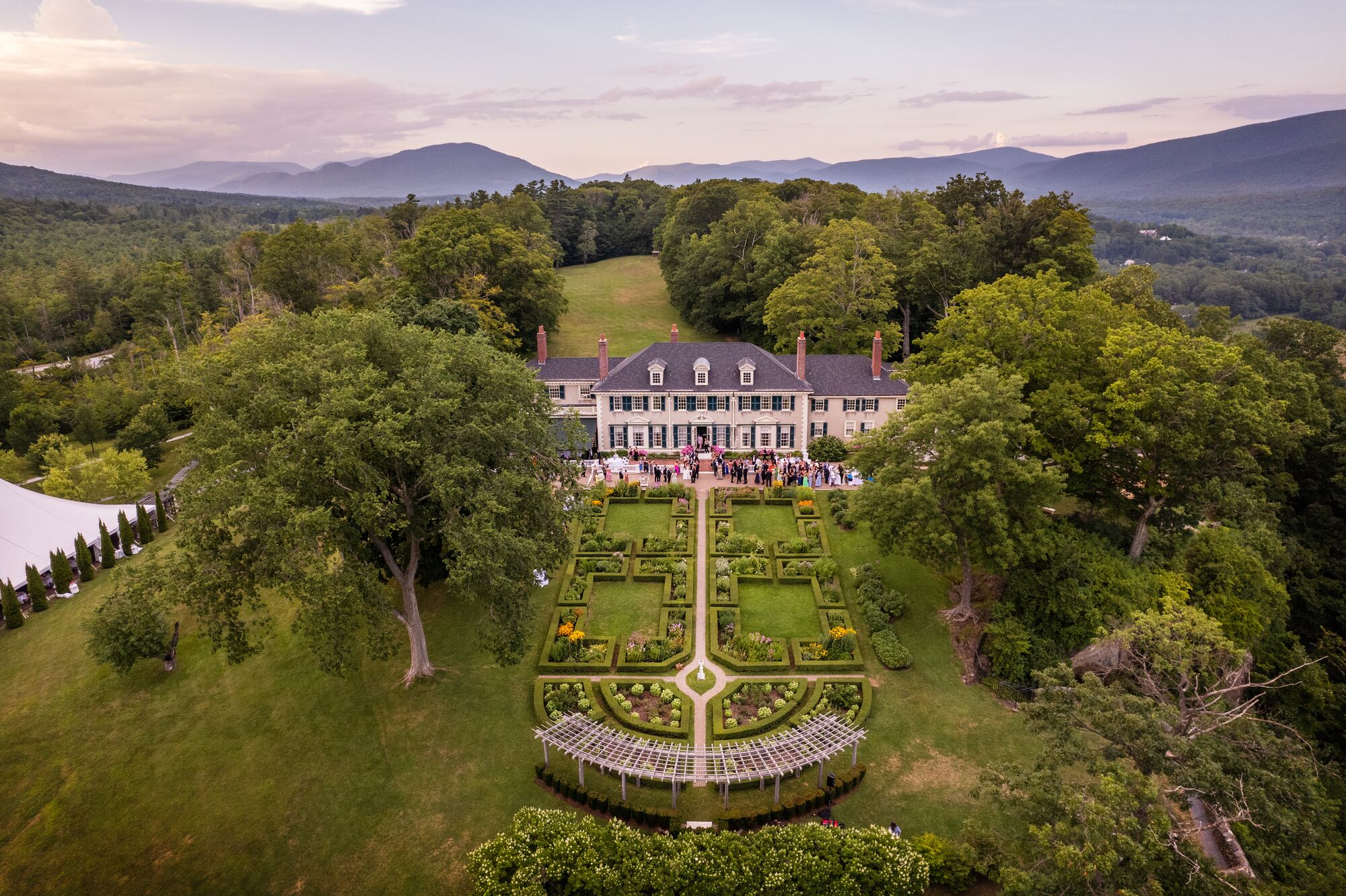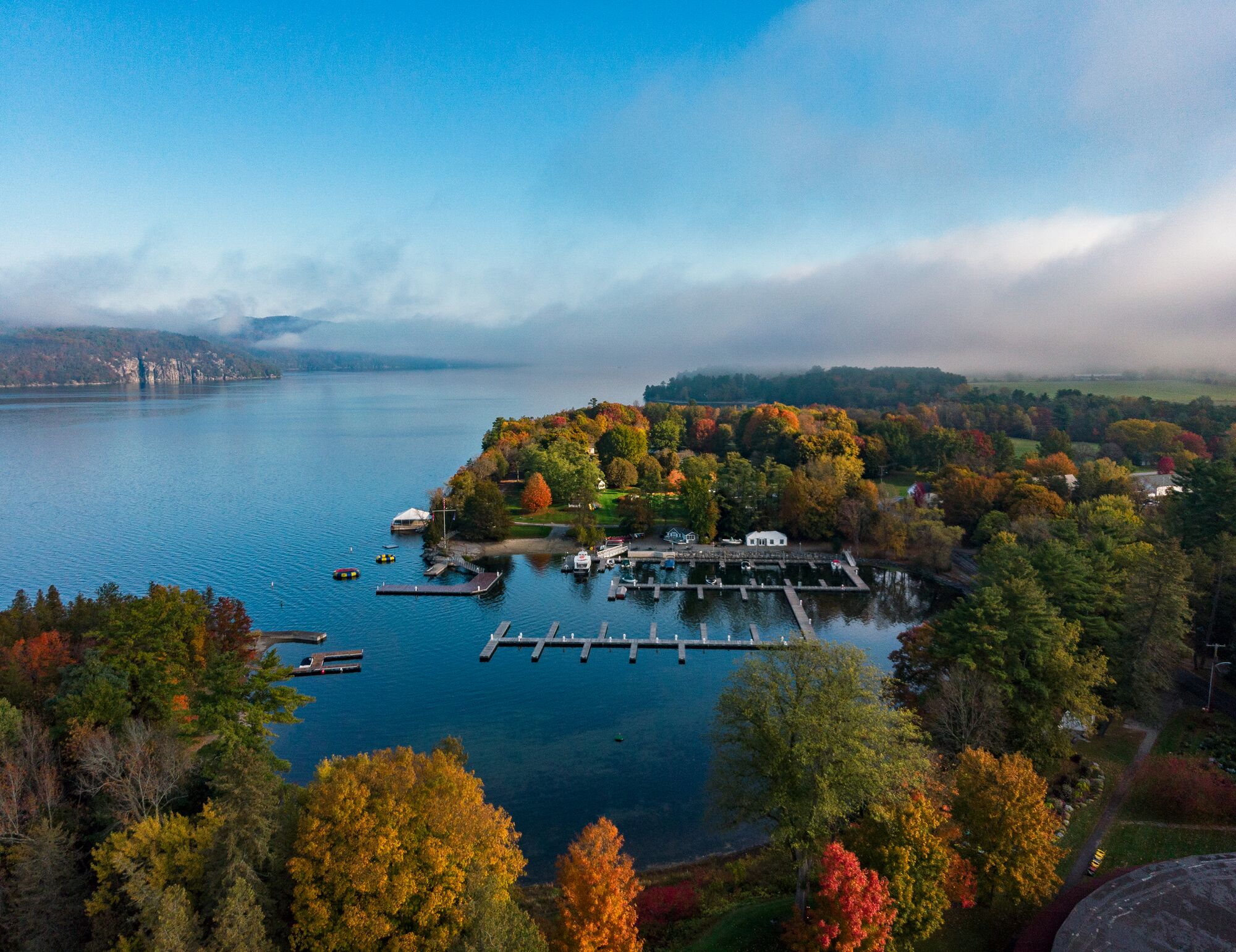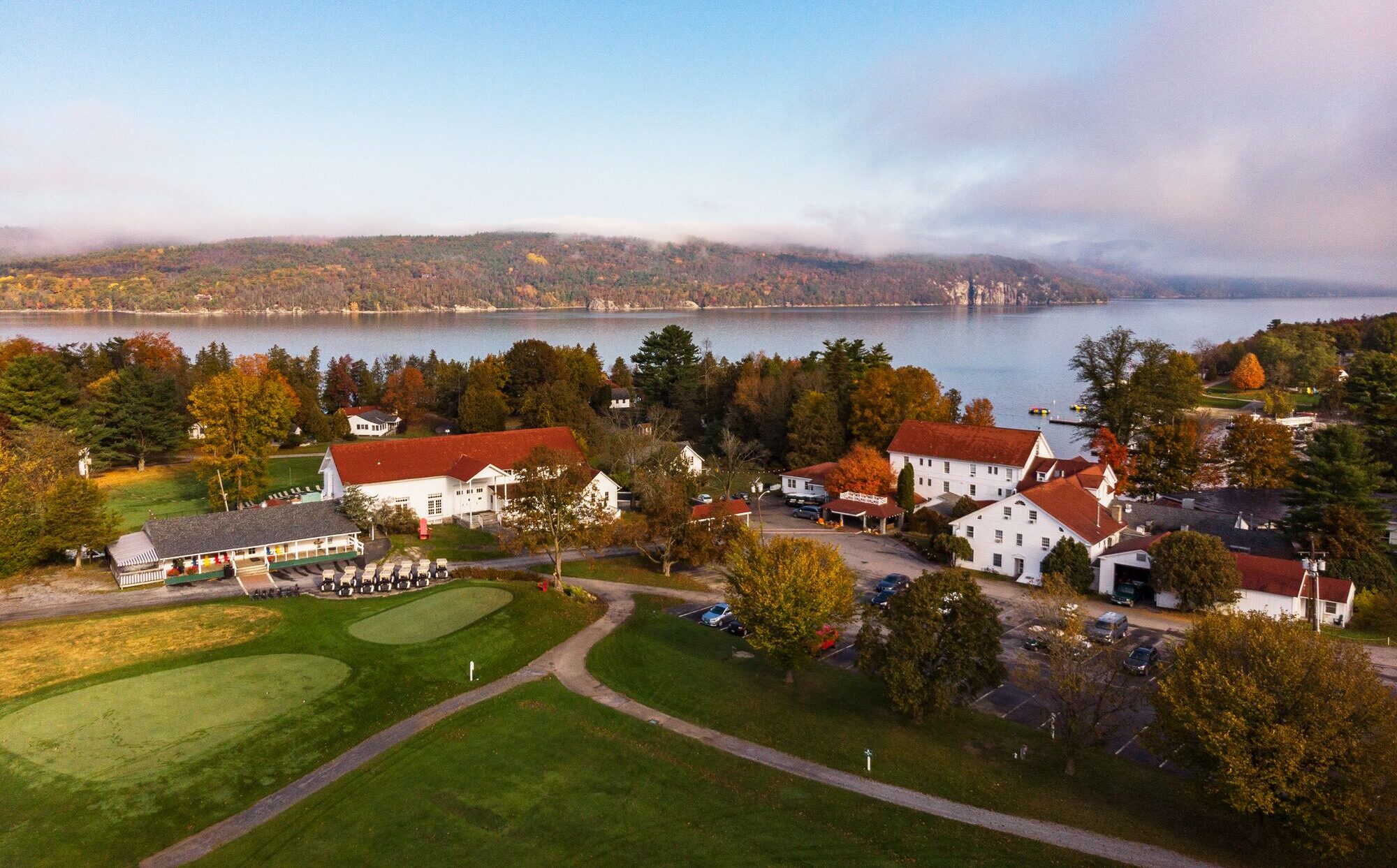Cold Hollow Sculpture Park
Cold Hollow Sculpture Park’s Outsize Artworks Turn Enosburg Falls Hayfields Into a Gallery
By Amy Lilly
Story originally published in Seven Days on 06|22|2021.
Cold Hollow Sculpture Park, just an hour’s drive north of Burlington in Enosburg Falls, is an alluring destination for a stroll or a picnic on a summer’s day. Visitors can explore three miles of grassy paths mown through hayfields against a background of rolling hills. The paths lead to, around and occasionally through nearly 70 enormous outdoor sculptures. All were created and sited by sculptor David Stromeyer, who owns the property with his wife, writer Sarah Stromeyer. The couple lives in a house on-site; he works in a studio on the grounds.
Thirteen of Stromeyer’s sculptures were visible from the welcome center on opening day, June 12. That’s because a neighboring farmer had just mowed the hay, said the artist, who strolled the grounds with a reporter amid a steady stream of visitors. The art “look[s] different depending on the height of the fields,” he noted.
Stromeyer bought this land 51 years ago and thinks of it as a gallery space. If he decides that the colors of one sculpture clash with those of another nearby, or if he’s made a new work that would complement a particular site better than an existing one, he doesn’t hesitate to move them around.
That involves no small effort. Stromeyer’s sculptures span up to 20 feet tall and 30 feet across and are made of steel, concrete or other weighty materials. Moving a piece can require two cranes and necessitate digging up and replanting a concrete base.
The artist keeps his five cranes in and near his studio, where he creates a few new works each summer. He also refurbishes the park’s older pieces, as well as works that have been on loan elsewhere — a never-ending job, considering he’s made 470 sculptures over the past half century.
Stromeyer’s sculptures have been widely collected. In Vermont, two are sited at the University of Vermont and one at Lemon Fair Sculpture Park, Frank and Elaine Ittleman’s public park on their East Shoreham property. More Stromeyer pieces are held in the collections of the Smithsonian American Art Museum, the deCordova Sculpture Park and Museum, and Cornell University, among other venues across the U.S., Canada and Italy.
But Cold Hollow is perhaps the best place to appreciate Stromeyer’s work. The outdoor site trades the formality of a museum for an evolving aesthetic vision encompassing weather, landscape and sky.
The park also illuminates the sculptor’s wide range. The unpainted assemblage “After Hitchcock” (1977) features a massive fieldstone dangling improbably in the wind, while “Jumoke” (2013) is polished and colorful with its bright red-and-blue-painted steel volumes. Intended to evoke a male figure, “Jumoke” is positioned so that it looks across a field at “Ngozi,” a 19-foot-tall abstraction of a female figure in poured concrete.
Encountering a large-scale sculpture inside a gallery can increase its impact; Cold Hollow’s expansive setting has the effect of reducing awareness of the sculptures’ massive scale until a viewer is at close range. The latter perspective also reveals surprising details, such as the way the bulging buckle in an upper sheet of steel in the boxy “Sheltered Sky” (1990) is mirrored on the underside of a lower one.
Stromeyer arrives at the titles of his works only after they’re complete. He’s reluctant to offer interpretations; a printed guide illuminates each with just a sentence or two. As he put it, “I’ve done 98 percent of the work by getting it here; visitors can do the rest.”
Our stroll took us past a couple gazing up at a 15-foot-tall yellow, pedestal-like form made from a rippled steel sheet and topped with a huge fieldstone. They asked the sculptor whether the piece was titled “Will You Marry Me?” because it reminded them of an engagement ring. Stromeyer smiled and played along: “Would that be a threat? Like you’d pick it up and throw it?”
The sculpture is actually called “Do I Dare Disturb the Universe?” (2020), after a line by poet T.S. Eliot.
Stromeyer is voluble when it comes to describing his process — particularly the kinds of engineering problems he needs to solve to enable a work to support its own weight for years in all weather.
For his most recent work, “Body Politic,” the artist created the undulating pancake-like form in its center by dropping a 5,000-pound fieldstone from a height of 30 feet onto two plates of steel, these set on a perimeter of stones on the ground. (Stromeyer used to shape many of his pieces using this rock-drop method before he built a hydraulic press in his studio.) For kicks, he released the clamp holding the fieldstone by shooting it with a gun.
According to the sculptor, the process of making “Body Politic” takes up at least half of a forthcoming book about his process. The brief visitor’s guide at the park, meanwhile, hints at one reason for the sculpture’s complicated form: “A collective organization of individuals gathers for a purpose. Like all complex systems, it cannot be fully understood from any one vantage point.”
Cold Hollow, which opened to the public in 2014, became a nonprofit in 2019. The intent was to establish a continuity plan for both the work and the land on which it was created.
As executive director Rosemary Gill put it during opening day, “We want to be open forever, and free.”
For both Gill and the Stromeyers, an important part of that vision is engaging other artists on-site through multidisciplinary public programming. Five programs are scheduled for this season, whose theme is “Why We Make Things.” This is the first of a three-year exploration of the act of creating that will continue with “How We Make Things” in 2022 and “Amazing Makers” in 2023.
On July 17, Boston-based interdisciplinary digital artist Jane D. Marsching, whose work focuses on climate change, will give a free talk on how “hope and radical imagination,” rather than fear, can help people act to reduce their environmental impact.
The following day, Marsching will offer a two-hour workshop, for a limited number of participants and for a fee, in actualizing that approach by writing about their responses to the spaces and features of Cold Hollow. Participants of all walks of life are invited to explore how to make such hands-on, collaborative art experiences a part of their everyday practice.
On August 21, two artists in residence — dancer-choreographer Laurel Jenkins and composer Matthew Evan Taylor, both Middlebury College professors — will present a collaborative performance among the sculptures. (Gill said chairs will be provided and the event will be fully accessible.)
On September 18, former Maine poet laureate Baron Wormser will read from and discuss his approach to writing his novel, in which one character is based on Bob Dylan.
Stromeyer himself wraps up the programming on October 9 with a walking artist’s talk about his newest sculptures.
Gill formerly directed a Boston artist residency and devised public outreach for an outdoor sculpture park in Sweden. She said the urge to bring in other artists comes from her respect for the creative drive — of Stromeyer and his cohort.
“Cold Hollow Sculpture Park stops me in my tracks,” Gill declared. “It’s beautiful.”
Visitors are likely to agree.
Cold Hollow Sculpture Park in Enosburg Falls is open noon to 6 p.m., Thursday through Sunday, until October 11. Free.
About the Seven Days Staytripper Series
Created by Seven Days, the “Staytripper: The Road Map for Rediscovering Vermont” series presents curated excursions statewide. The series was originally published from 2020-2022 and highlights Vermont restaurants, retailers, attractions, and outdoor adventures to spotlight all corners of the state.



